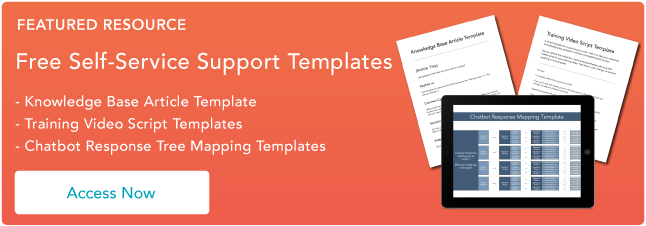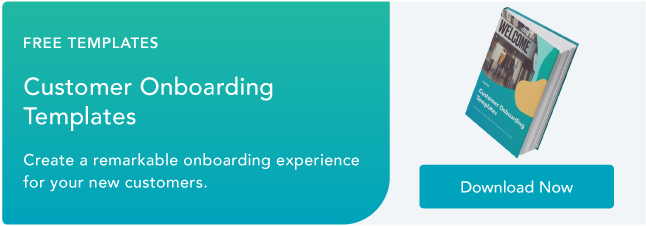
I take classes at a local Pilates studio at least once a week. After signing up for a class through an app, I get SMS updates communicating class changes and reminders. My favorite kind of text is the one letting me know I’ve been moved off the waitlist and into the class. These real-time updates wouldn’t be possible without customer service texting software.
Customer service texting, or SMS customer service, is an essential part of an omnichannel messaging strategy and an increasingly important element of customer service overall. And when customer service is critical to the rest of the business’s success, SMS software is not something to overlook.
Table of Contents
- What is customer service texting software?
- How does customer service texting software work?
- 10 Best Customer Service Texting Software
What is customer service texting software?
Customer service texting software is a program or platform that allows businesses to communicate directly with customers via text messages. Also known as SMS customer service, this form of communication enables businesses to answer customer questions, resolve issues, share appointment reminders, or send order updates in a way that’s convenient for everyone involved.
Including SMS in your customer service strategy — in addition to phone, email, social media, and live chat — allows you to meet customers wherever they are. Taking an omnichannel approach is key to providing good customer service.
Not only does texting provide instant support when customers need it — which can be a fast and convenient way to resolve an issue when they have a question — but it also enables agents to help customers asynchronously. Helping customers over text is much more efficient than talking on the phone, which means agents can handle more tickets in one day. This, combined with the automation that customer service texting software provides, helps your company save time and money. And if you want to learn more about how those intertwine, check out our 2024 State of Customer Service report.
How does customer service texting software work?
Customer service texting software works like other tools in your tech stack. Once you set up a business number or enable texts on your existing one, you can use your software to create and send messages to your contacts. The software can be standalone, or you can choose one that integrates with other tools to create a connected workflow, like the HubSpot’s customer service software.
Most SMS services offer mass texting, two-way conversations, and sometimes MMS (multimedia messaging service), which enables you to send images and GIFs. If you’re focused on using SMS for customer service purposes, the ability to have two-way conversations is the most important feature to look for — especially when you consider that 61% of consumers want the ability to text a business back.
If you have a business landline, you can text-enable your existing number. Or, you can choose a new 10-digit local or 800 number. You can also opt for a five to six-digit short code.
Once you have your SMS number and your software set up, you are ready to start helping customers over text.
10 Best Customer Service Texting Software
I receive texts from businesses all the time, but I never thought about how they could actually text me until I started looking into customer service texting software.
Here are some of the top customer service texting services I found for a range of industries and businesses of all sizes.
1. SimpleTexting
As its name implies, SimpleTexting makes SMS conversations easy for businesses of all sizes. Whether you want to send product updates or marketing announcements to a list of 500 people or engage in two-way conversations to resolve a customer inquiry, you can do it all in one dashboard.
Some of SimpleTexting’s helpful customer service features include templates for saved replies, self-cleaning lists, link shortening and tracking, and polls. SimpleTexting also makes it easy to launch your texting strategy, even if you’re starting from scratch, by offering multiple options for setting up a number to text from.
What I like: The idea of sending a text to your customers can feel daunting if you haven’t done it before. That’s why I appreciate that SimpleTexting’s free trial allows you to text your own number *first* to see how it all works.
2. Textline
Textline is a popular customer service texting platform that offers secure ways to send bulk SMS, collaborate via group messages, send media attachments, and have two-way conversations. Textline’s pricing plans support anywhere from three to 50 agents, making it a smart SMS software for teams of all sizes.
Plus, Textline integrates with tons of tools that your support team likely already uses, such as HubSpot and Slack, making it easy to create a seamless workflow.
What I like: With Textline, you can send text surveys to directly collect feedback from customers and ultimately improve the customer support process.
3. EZ Texting
EZ Texting is an SMS marketing service used by teams in marketing, sales, operations, and customer service. Plans include unlimited two-way texting and incoming messages, which means you don’t have to worry about missing a customer inquiry.
One of my favorite features of EZ Texting is AI Compose, which uses generative AI to help compose personalized texts for your audience. Using AI to help generate texts is the fastest way to scale your customer service texting operations.
Pro: If you plan to send MMS or multimedia content, you can tap into EZ Texting’s massive library with millions of free images from Shutterstock. There’s even an image editing tool.
4. Twilio
If you’re tech-savvy, consider using Twilio’s SMS API. Geared toward developers, Twilio offers an API that can be used to build your own messaging system, making it a customizable solution.
With Twilio, you can send and receive text messages at scale, and the pricing structure is pay-as-you-go, so you only pay for what you use. This can be a cost-effective way to scale your customer service texting strategy as long as you know how to use the API or have a developer on your team who does.
Best for: Twilio is a developer-friendly SMS tool, so it’s best for those with technical skills.
5. Textedly
Textedly is an SMS marketing service equipped for a range of industries, from retail and restaurants to schools and nonprofit organizations. All of the Textedly plans include unlimited contacts, free incoming messages, picture messaging, one toll-free number, and one 10-digit phone number (10DLC).
While the service is geared toward SMS marketing, Textedly enables businesses to conduct customer service through its two-way texting, personalized messages, and text message analytics. It also helps businesses collect customer feedback by enabling review requests sent through text. This can be a helpful way to automate the process and generate more Google reviews for your business in the process.
Pro: Textedly integrates with over 3,000 apps like HubSpot, Mailchimp, Shopify, and Facebook, so you can connect every tool in your workflow to save time.
6. Heymarket
Heymarket is a business texting platform that lets you connect with customers, leads, and employees on SMS and popular messaging apps like Facebook Messenger, WhatsApp, and Instagram.
Some of Heymarket’s most helpful features for customer service include automated texting through keyword-triggered responses and a shared inbox so your support team can tackle multiple ticket requests at one time. Heymarket also offers AI-assisted messaging so you can create responses faster and more efficiently.
What I like: Heymarket’s AI-assisted messaging helps translate messages in English, French, Spanish, and Chinese which enables your support team to help even more people.
7. Textmagic
If you’re looking for an all-in-one business texting solution, Textmagic is another great option. The platform offers two-way texting, mass texts, SMS marketing, and SMS surveys. Plus, it integrates with other support channels so your support team can take an omnichannel approach to customer service.
Textmagic’s pricing structure is a prepaid service. You choose a credit package based on how many texts you plan to use and only pay for texts you send or receive. Add-on features include dedicated virtual numbers, the ability to send MMS, and voice calls.
Pro: In addition to texting, Textmagic makes it easy to use email or voice for customer service interactions so your team can help customers in whatever way is most convenient for them.
8. MessageDesk
MessageDesk is an SMS inbox for business texting. Like other texting platforms, MessageDesk enables you to text-enable your existing business landline or VoIP phone number or sign up for a new local number.
The platform’s main feature is the team inbox. The shared inbox allows your support team to manage conversations together from one phone number, which helps boost visibility and organization across the customer service team.
Con: You have to talk to a member of the sales team to get started, which may deter some people who prefer self-service.
9. Google Voice
Looking for a no-frills business texting option? With unlimited texting and plans that start at just $10 per month, Google Voice is a great option for small businesses and individuals who aren’t looking to add another tool to their tech stack.
As part of Google Workspace, Google Voice is an easy way to set up business communications within your current workflow. Voice integrates with Google Meet and Calendar, so all of your business communications are synched. If you’re already familiar with the Google Workspace interface, you’ll have no issues navigating Google Voice.
Best for: Google Voice is an easy, budget-friendly option for small businesses or individuals looking to set up business calling and texting, especially if you already use Google Workspace products.
10. OpenPhone
If you’re looking for a full-scale communication system, OpenPhone is a business phone system that includes texting. Some of OpenPhone’s most helpful features for customer service texting include auto-replies, saved message templates, and internal threads so your customer support team can handle inquiries behind the scenes.
All OpenPhone plans include unlimited calling and texting in the US and Canada, and they start at $15 per user per month.
Best for: Businesses who prioritize both calling and texting will benefit from one connected system under OpenPhone.
Use SMS Support to Meet Customers Where They Are
Customer expectations have evolved with the technology that’s available to them. The more time people spend on their phones, the more likely it is that they’ll want to interact with businesses in the same way.
In my experience, the customer service interactions that were the most positive and memorable for me were the ones that were resolved quickly by friendly and supportive customer service agents. I can’t think of a better way to do this than through texting (because, yes, I am a millennial who hates talking on the phone).
Your business needs to be equipped with SMS support to meet customers where they are and address their issues in a way that’s convenient for them. Customer service texting software enables your support team to resolve tickets swiftly and efficiently without spending all of their time on the phone, which benefits everyone involved.
![]()

![→ Download Now: Customer Service Metrics Calculator [Free Tool]](https://no-cache.hubspot.com/cta/default/53/e24dc302-9dc2-466f-a5ca-ab4e08633c0f.png)


![→ Access Now: 50 Customer Service Email Templates [Free Resource]](https://no-cache.hubspot.com/cta/default/53/9a8328ad-9a07-4f92-aa9c-468dc3a4a9d7.png)





















![Download Now: The Annual State of Artificial Intelligence in 2024 [Free Report]](https://no-cache.hubspot.com/cta/default/53/b72f2b25-8cc9-4642-9a1b-1e675d3d273b.png)



